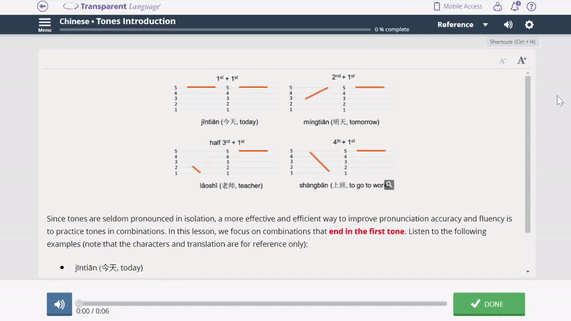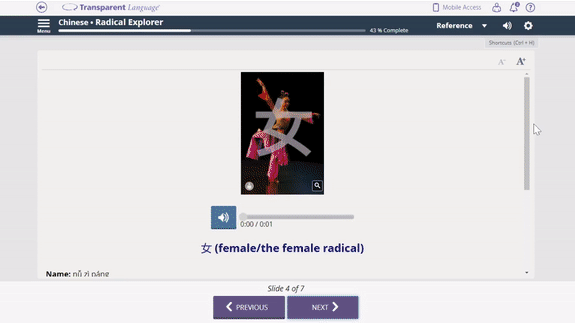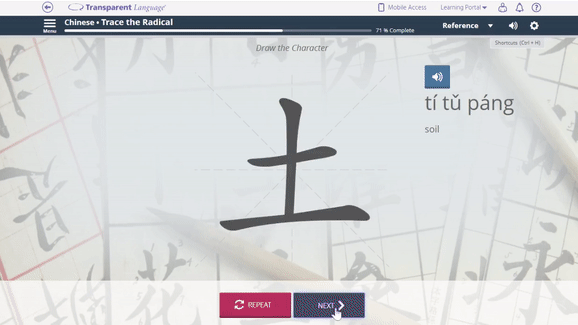New Chinese Fundamentals Courses: Tones & Radicals Posted by meaghan on Apr 13, 2022 in For Instructors, For Learners, For Program Managers, New Learning Materials
Mandarin Chinese can be intimidating to learn from scratch—and maintain throughout your career.
Get started on the right foot and keep your fundamentals sharp with our two new courses: Chinese Tones & Chinese Radicals Familiarization.
Developed by a veteran Mandarin Chinese teacher, these courses apply her lessons learned from more than 10 years of teaching the language to US Government professionals.
Chinese Tones Course
You can’t speak or understand spoken Chinese if you can’t distinguish and pronounce the different tones.

In Chinese, the same syllable can be pronounced in different tones to give a word different meanings. For example, if you say the expression for “excuse me” with the wrong tone, you could accidentally say “to kiss”.
These mistakes are very common among beginners and even among intermediate learners who haven’t quite mastered the way tones behave together. Unfortunately, most textbooks only give a short overview of tones and neglect an important middle step: practicing tones in combination in multisyllable words.
In about 2.5 hours, our Chinese Tones Course will prepare you to identify and pronounce tones both alone and in multisyllable words.
You’ll progress from tones by themselves, to tones in combination, to full words and phrases—all using vocab and language that beginner Chinese learners are likely to come across.
The course also focuses on real world applications. For example, native speakers rarely fully pronounce the third tone, so we’ll help you practice it the way you’ll actually hear it in real conversations.
Chinese Radicals Course
Just like you can’t listen to or speak Chinese without tones, you can’t read or write the language without knowing the radicals.

Chinese has no alphabet. Instead, there are tens of thousands of characters that you must memorize. Fortunately, characters are all made up of the same radicals, and there’s only about 200 of those (and even native speakers might not know all of them).
When you understand how radicals come together to form a character, you can learn more characters in less time.
Unfortunately, you’ll get maybe a few pages on radicals in most Chinese textbooks. If you’re working with an instructor, he or she will likely end up spending many hours expanding on what the textbook teaches so you can make sense of radicals and their implications for stroke order, character meanings, and beyond.
In about 6 hours, our Chinese Radicals Course will help you master the 40 most common and essential radicals, both on their own and within characters.
This course will help you get to the root of Chinese (pun totally intended) through:
- Visual connections: Each radical is presented on top of a related image to help you establish a connection the shape and its meaning through image-based activities.
- Interactive tracing: A finger (or mouse) tracing activities helps you practice stroke order so you can distinguish radicals that look similar.
- Real-world application: At the end of the course, you will prove to yourself that you’ve learned the radicals by applying them to read real-world materials like street signs!

It’s not as intimidating as it might sound. Take it from Lei Zeng, the creator of these courses:
“Small steps bring big results. Mastering these fundamentals shows learners that Chinese characters are not just a bunch of lines that you draw. There is a logic behind it. The moment students understand the logic and can see why a character means what it does is a beautiful moment as a teacher.”
Both courses are available now in the CL-150 Platform and can be used for independent learning via the Learning Portal or assigned by instructors via the Instructor Portal.


